TERMINALIA
Terminalia
L., Mant. 1: 21. 1767; Benth. & Hook., Gen. Pl. ed. 1: 685. 1865; Clarke in Hook. f., Fl. Brit. India 2: 443. 1879; Cooke, Fl. Pres. Bomb. 1: 507. 1958 (Reprinted ed.); Parker, For. Fl. Punj. ed. 1: 238. 1918 (Reprint 1973); Fl. China @ eFloras.org 13: 310; Fl. Pak. @ eFloras.org p. 6.
Large trees. Branches often in tiers. Leaves alternate or subopposite, often crowded at the ends of branches and usually with 2 or more glands on midrib or petiole. Inflorescences axillary or terminal spikes or racemes, sometimes panicles, with bisexual flowers towards base of inflorescence and male flowers towards apex; flowers small, actinomorphic, and epigynous. Calyx tube (hypanthium) ovoid or cylindric, constricted above the ovary; lobes (4 or) 5, short, ovate or triangular, valvate, deciduous. Petals absent. Stamens (8 or) 10, inserted in 2 series on the calyx, the upper longer alternating with calyx lobes, the lower opposite the calyx lobes; filaments subulate or filiform, exserted; anthers small, lobes scarcely connected. Disk epigynous, within the stamens (intrastaminal), densely hairy. Monocarpellary, ovary unilocular, ovules 2-3, apical, pendulous; style long, simple. Fruit variable in size and shape, drupaceous, mostly ovoid, indehiscent, smooth, angular and winged.
281 species
Terminalia arjuna
Terminalia arjuna
(Roxb. ex DC.) Wight & Arn., Prodr. 314. 1834; Clarke in Hook. f., Fl. Brit. India 2: 447. 1879; Cooke, Fl. Pres. Bomb. 1: 507.1958 (Reprinted ed.); Dalz. & Gibbon, Bomb. Fl. 91. 1861; Parker, For. Fl. Punj. ed. 1: 239. 1918 (Reprint 1973); Stewart R. R., Ann. Cat. Vas. Pl. W. Pak. & Kashm. 502. 1972; Fl. Pak. @ eFloras.org p. 9; Pentaptera arjuna Roxb. ex DC., Prodr. 3: 14. 1828; Terminalia glabra Wight & Arn., Prodr. 314. 1834; T. urjan Royle, Illustr. Bot. Himal. Mounts. 209. 1835.
A large tree, up to 25 m tall, with smooth pale green bark, trunk sometimes buttressed, branches drooping. Leaves 7-18(-25) cm x 4-6(-9) cm, usually subopposite, oblong, oblong- elliptic or somewhat suborbicular; apex obtuse or subacute; base rounded or cordate, often unequal sided; margin entire or crenate-serrate in the upper part or throughout; glabrous above, more or less pubescent beneath; usually with a pair of glands on the blade beneath close to the top of petiole; petiole 5-10 mm long. Inflorescence axillary or terminal paniculate spikes, 5-8 cm long, 1 cm broad, hanging. Flowers bisexual, actinomorphic, epigynous, small, white, ca. 1.2 cm across, dense on spikes. Calyx tube (hypanthium) broadly campanulate, 4-5 mm long and ca. 2.5 mm across, glabrous, lobes triangular, ca. 1.2 mm long, valvate. Petals absent. Stamens 10, exserted, inserted in 2 series on hypanthium, the upper longer alternating with calyx lobes, the lower opposite the calyx lobes; filaments 3-4 mm long; anthers ca. 1 mm long. Disk intrastaminal, densely hairy. Monocarpellary, ovary ca. 3 mm long, 1-celled, glabrous, ovules apical pendulous; style slender, ca. 4 mm long. Stigma minute. Fruit a drupe, 2.5-5 cm long, ovoid-oblong, brown, with 5 hard projecting wings, wings less than 1.2 cm wide, striate with numerous ascending veins.
Common Names: Arjan
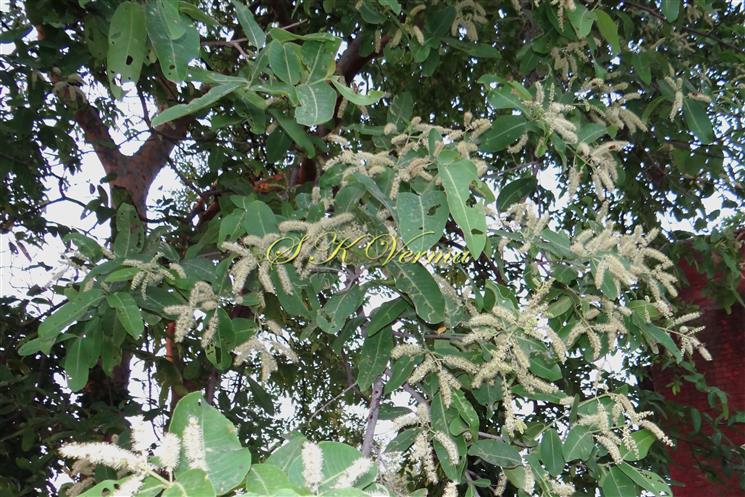
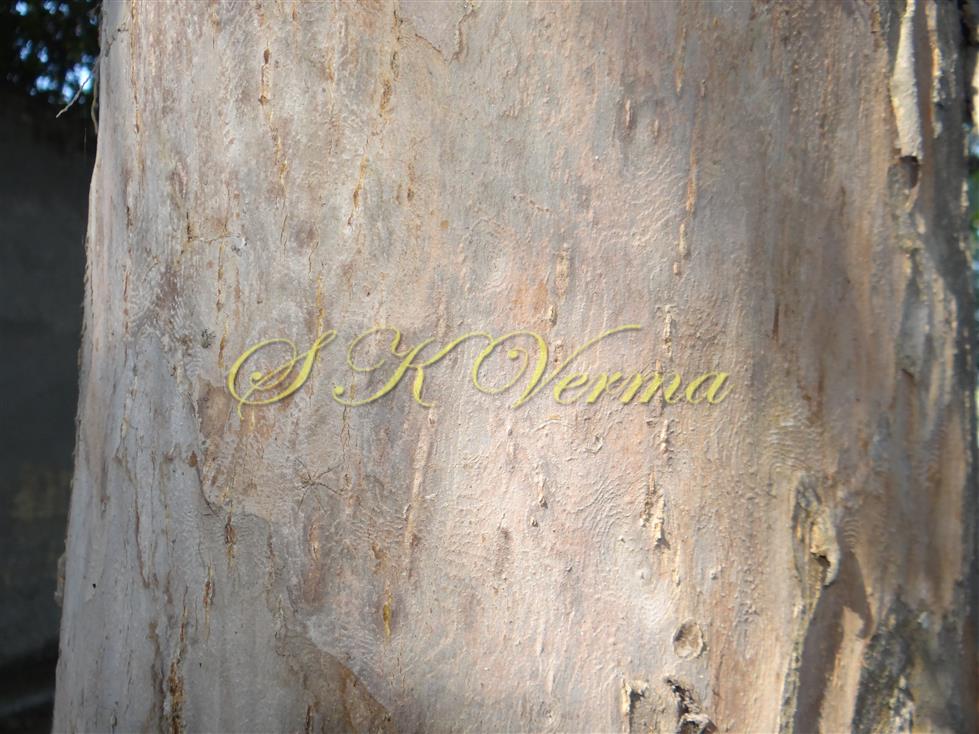
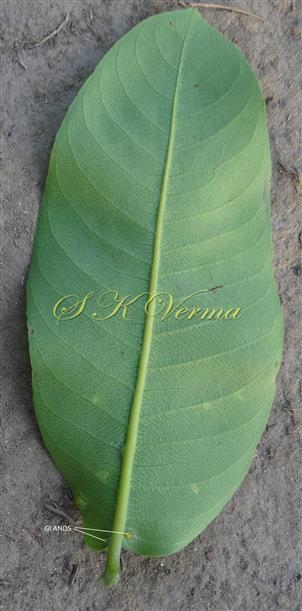
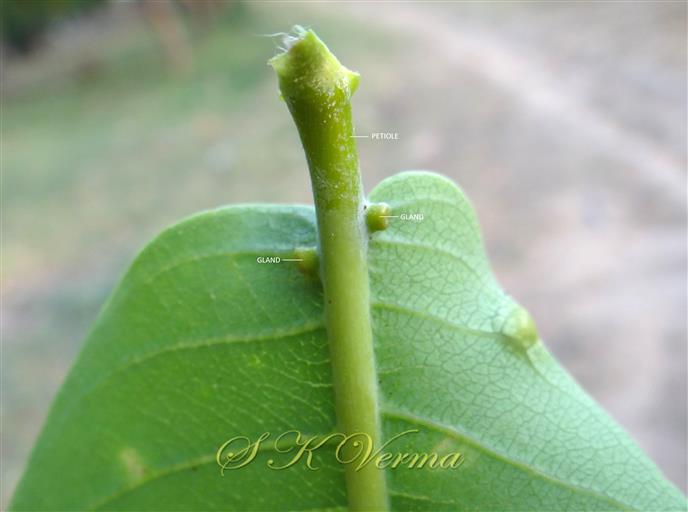
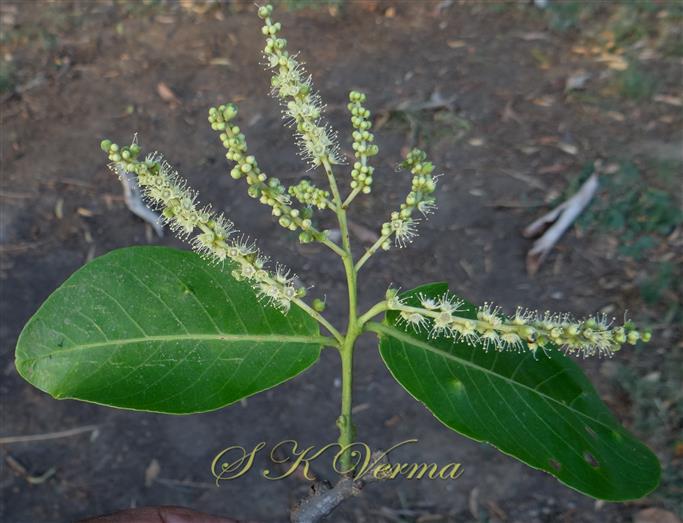
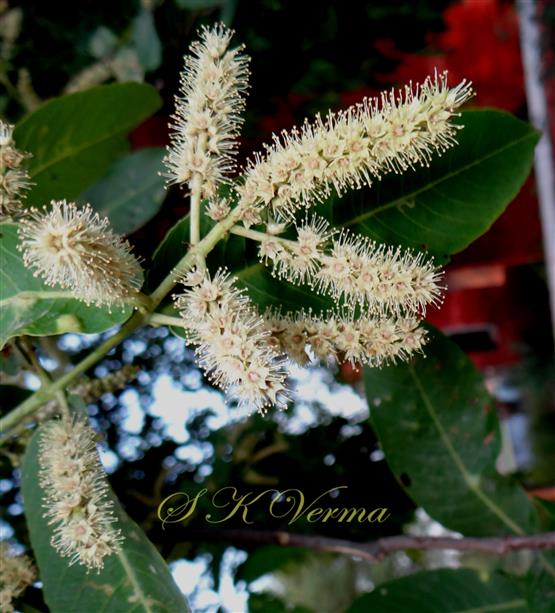

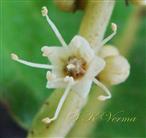
-2367.jpg)
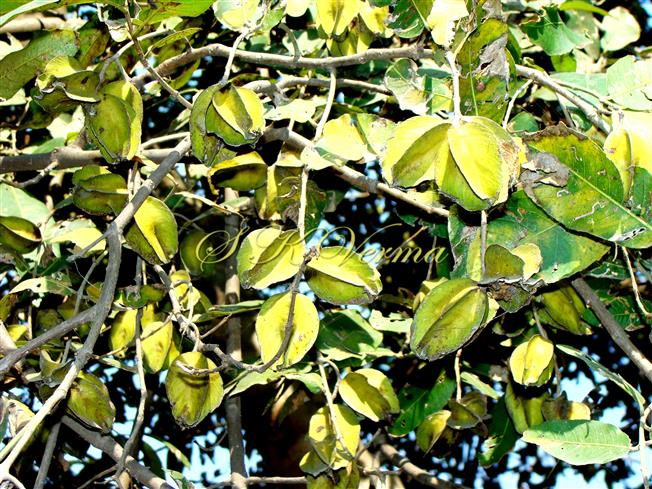







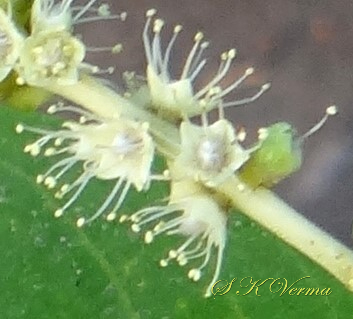

-2367.jpg)
